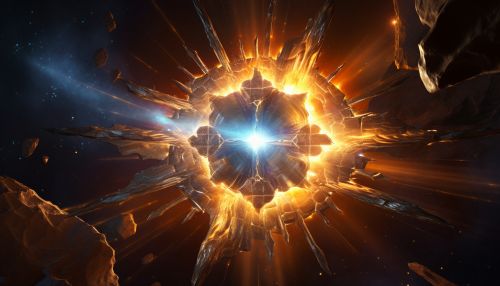Stellar Nucleosynthesis and the Origins of Heavy Elements
Introduction
Stellar nucleosynthesis is the process by which elements are created within stars by combining the protons and neutrons together from the nuclei of lighter elements. This process of nuclear fusion creates new atomic nuclei from pre-existing nucleons (protons and neutrons). The process is responsible for the galactic abundances of elements from carbon to iron. Elements heavier than iron are formed through neutron star mergers or during the supernova explosions of massive stars.
History
The concept of stellar nucleosynthesis was first proposed by Arthur Stanley Eddington in the 1920s. He suggested that stars obtained their energy from nuclear fusion of hydrogen to form helium and also hypothesized that the heavier elements are produced in stars.
Nuclear Fusion
Nuclear fusion is the process by which multiple atomic particles join together to form a heavier nucleus. It is accompanied by the release or absorption of energy depending on the masses of the nuclei involved. In stars, nuclear fusion occurs in a series of stages, known as nuclear reactions chains or cycles, such as the proton-proton chain, the CNO cycle, and the triple-alpha process.


Proton-Proton Chain
The proton-proton chain is one of two sets of fusion reactions by which stars convert hydrogen into helium, the other being the CNO cycle. The proton-proton chain dominates in stars the size of the Sun or smaller.
CNO Cycle
The CNO cycle (for carbon-nitrogen-oxygen) is one of two sets of fusion reactions by which stars convert hydrogen into helium, the other being the proton-proton chain. The CNO cycle, unlike the proton-proton chain, is a catalytic cycle. It involves the nuclei of carbon, nitrogen and oxygen as catalysts and releases a large amount of energy.
Triple-Alpha Process
The triple-alpha process is a set of nuclear fusion reactions by which three helium-4 nuclei (alpha particles) are transformed into carbon. The triple alpha process only occurs in stars where the temperature (in the star's core) is over 100 million Kelvin.
Formation of Elements Heavier than Iron
Elements heavier than iron are not formed through the usual stellar nucleosynthesis process. Instead, they are largely formed through neutron star mergers and supernova explosions. These processes, known as the r-process and the s-process, involve a rapid capture of neutrons (r-process) or a slow capture of neutrons (s-process).
R-Process
The r-process is a nucleosynthesis process, likely occurring in neutron star mergers and supernovae, that is responsible for the creation of approximately half of the neutron-rich atomic nuclei heavier than iron. The r-process entails a rapid capture of neutrons, hence the name ‘r-process’ where ‘r’ stands for rapid.
S-Process
The s-process or slow-neutron-capture-process is a nucleosynthesis process that occurs at relatively low neutron density and intermediate temperature conditions in stars. Under these conditions the neutron capture is slower than the beta decay rate and hence it is called the s-process where ‘s’ stands for slow.
Conclusion
Stellar nucleosynthesis is a process that occurs at the core of a star and involves a number of different processes including nuclear fusion, neutron capture, and supernova explosions. This process is responsible for the creation of all elements heavier than helium, with elements up to iron being formed through nuclear fusion in stars and elements heavier than iron being formed through neutron star mergers and supernova explosions.
